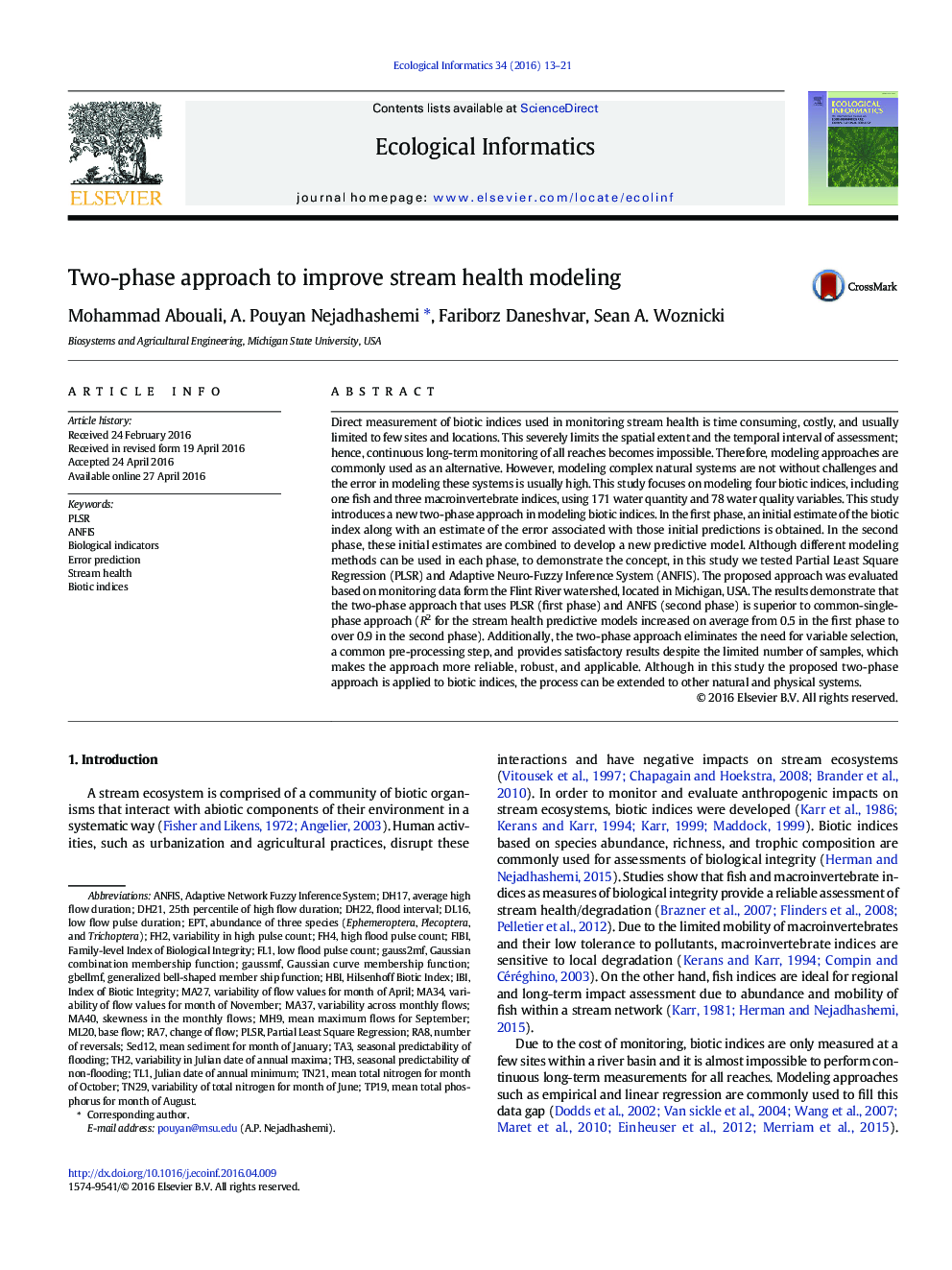| Article ID | Journal | Published Year | Pages | File Type |
|---|---|---|---|---|
| 4374757 | Ecological Informatics | 2016 | 9 Pages |
•This study introduces a new two-phase approach in modeling biotic indices.•The model inputs including 171 water quantity and 78 water quality variables.•The models were evaluated against monitoring data of four biotic indices.•A new approach is superior to common-single-phase approach.
Direct measurement of biotic indices used in monitoring stream health is time consuming, costly, and usually limited to few sites and locations. This severely limits the spatial extent and the temporal interval of assessment; hence, continuous long-term monitoring of all reaches becomes impossible. Therefore, modeling approaches are commonly used as an alternative. However, modeling complex natural systems are not without challenges and the error in modeling these systems is usually high. This study focuses on modeling four biotic indices, including one fish and three macroinvertebrate indices, using 171 water quantity and 78 water quality variables. This study introduces a new two-phase approach in modeling biotic indices. In the first phase, an initial estimate of the biotic index along with an estimate of the error associated with those initial predictions is obtained. In the second phase, these initial estimates are combined to develop a new predictive model. Although different modeling methods can be used in each phase, to demonstrate the concept, in this study we tested Partial Least Square Regression (PLSR) and Adaptive Neuro-Fuzzy Inference System (ANFIS). The proposed approach was evaluated based on monitoring data form the Flint River watershed, located in Michigan, USA. The results demonstrate that the two-phase approach that uses PLSR (first phase) and ANFIS (second phase) is superior to common-single-phase approach (R2 for the stream health predictive models increased on average from 0.5 in the first phase to over 0.9 in the second phase). Additionally, the two-phase approach eliminates the need for variable selection, a common pre-processing step, and provides satisfactory results despite the limited number of samples, which makes the approach more reliable, robust, and applicable. Although in this study the proposed two-phase approach is applied to biotic indices, the process can be extended to other natural and physical systems.
